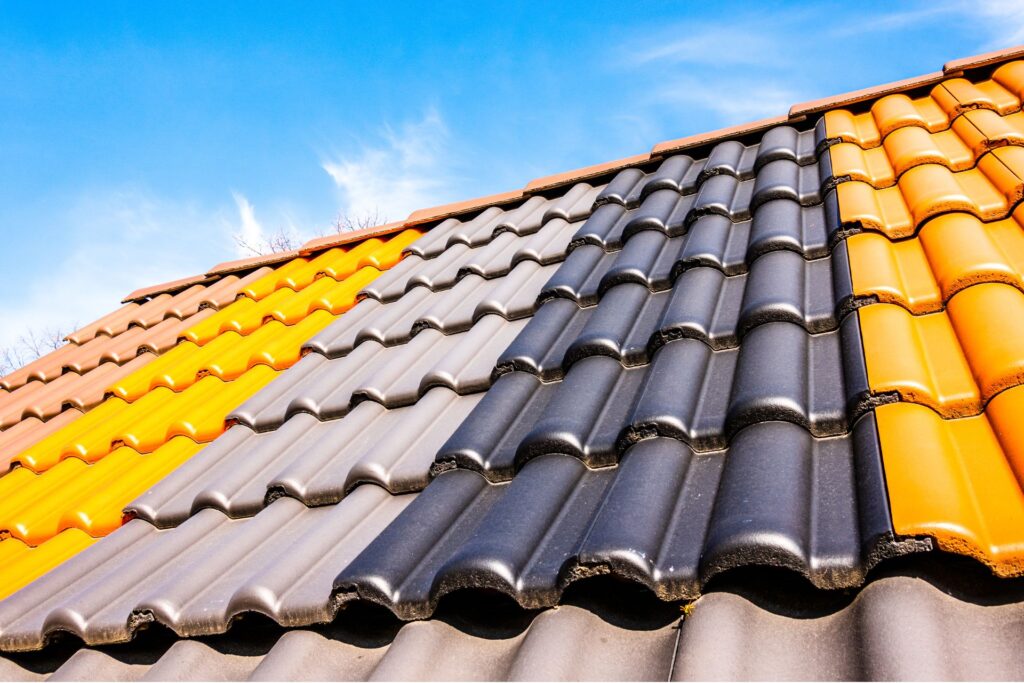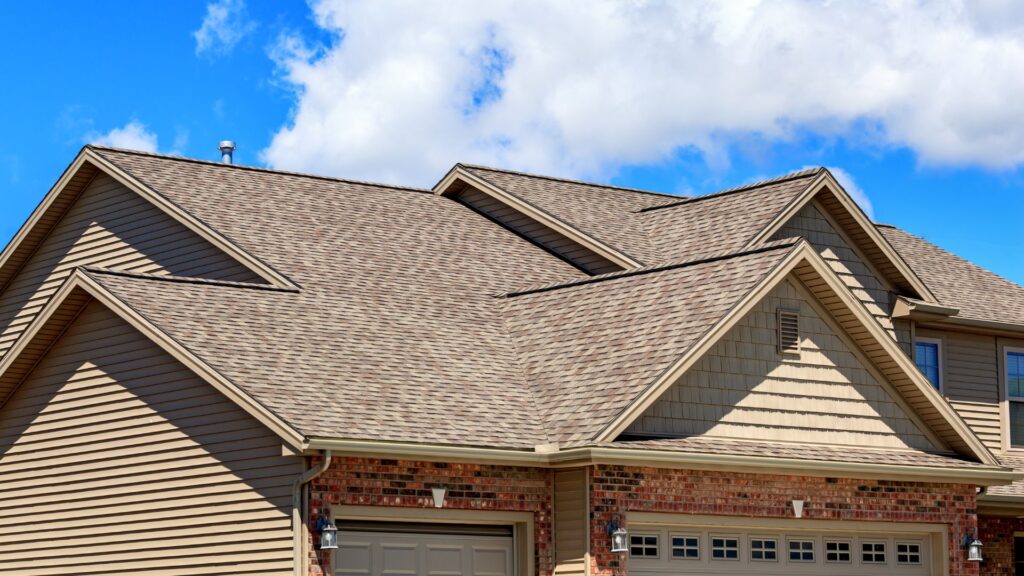Ultimate Guide To Best Clear Roofing Material NZ
Welcome to our comprehensive guide on the best clear roofing material in New Zealand. Whether you’re looking to enhance your outdoor living space, build a greenhouse, or add a stylish touch to your pergola, choosing the right clear roofing material is crucial. In this article, we’ll explore the various options available, considering factors like durability, UV protection, insulation properties, cost, and aesthetic appeal. Our goal is to provide you with all the information you need to make an informed decision that suits New Zealand’s unique climate and your specific needs. Let’s dive into the world of clear roofing materials and discover the best choices for your home.
The best clear roofing materials in New Zealand include polycarbonate, acrylic, fiberglass, and glass. Polycarbonate is known for its durability and UV protection, making it ideal for various applications. Acrylic offers high clarity and impact resistance, while fiberglass is cost-effective and flexible. Glass provides a luxurious and long-lasting option, perfect for high-end projects. Each material has its pros and cons, so consider factors like cost, durability, insulation, and aesthetic appeal to choose the right one for your needs.
Understanding Clear Roofing Materials
Definition and Benefits
Clear roofing materials, often made from polycarbonate, acrylic, or glass, are transparent or translucent roofing solutions that allow natural light to penetrate through them. These materials are specifically designed to offer a blend of functionality and aesthetics, making them a popular choice for various architectural applications.
Benefits of Clear Roofing Materials
1. Natural Light
Clear roofing materials allow a significant amount of natural light to enter the space beneath. This feature reduces the need for artificial lighting during the day, creating a bright and welcoming environment. Natural light is known to enhance mood and productivity, making these materials ideal for both residential and commercial spaces.
2. Aesthetic Appeal
The transparency of clear roofing materials adds a modern and sleek look to any structure. Whether it’s a contemporary home or a chic outdoor space, these materials contribute to a clean and minimalistic aesthetic. They can seamlessly blend with different architectural styles, enhancing the overall visual appeal.
3. Energy Efficiency
By maximizing the use of natural light, clear roofing materials can contribute to energy savings. During daylight hours, the reliance on electric lighting is significantly reduced, leading to lower energy consumption and utility bills. Some advanced clear roofing options also offer UV protection and insulation properties, further enhancing their energy efficiency.
Popular Uses
Clear roofing materials are incredibly versatile and can be used in a variety of settings to enhance both functionality and design. Here are some common applications:
1. Patios
Clear roofing materials are an excellent choice for patios, providing a sheltered outdoor space that remains bright and airy. They protect against the elements while still allowing homeowners to enjoy natural light and outdoor views.
2. Greenhouses
In greenhouses, the use of clear roofing materials is essential for plant growth. These materials ensure that plants receive ample sunlight, which is crucial for photosynthesis and healthy development. They also help maintain a consistent temperature within the greenhouse.
3. Pergolas
Pergolas with clear roofing materials offer a perfect blend of shade and sunlight. They provide protection from rain and harsh sunlight while still allowing a pleasant amount of light to filter through, creating an inviting outdoor area for relaxation and entertainment.
4. Carports
Clear roofing materials are a practical choice for carports, offering protection for vehicles from weather conditions without completely blocking out light. This can prevent the space from feeling too enclosed and dark.
5. Skylights
Skylights made from clear roofing materials bring natural light into interior spaces, reducing the need for artificial lighting and creating a sense of openness. They are particularly popular in rooms that do not receive much natural light, such as bathrooms and hallways.
By understanding the definition, benefits, and popular uses of clear roofing materials, homeowners and builders can make informed decisions that enhance both the functionality and aesthetics of their projects. Whether it’s for a cozy patio, a thriving greenhouse, or a stylish pergola, clear roofing materials offer a versatile and efficient solution that leverages the beauty and utility of natural light.

Key Factors To Consider When Choosing Clear Roofing Material
When selecting clear roofing material, there are several critical factors to keep in mind to ensure you make the best choice for your needs. Each factor can significantly impact the longevity, functionality, and overall satisfaction with your roofing solution. Let’s dive into the essential aspects you should consider:
Durability
Durability is paramount when choosing a clear roofing material, especially considering New Zealand’s diverse and often harsh climate. The country experiences everything from intense UV rays to heavy rainfall and strong winds, so your roofing material needs to withstand these elements over time.
For example, polycarbonate roofing is known for its exceptional durability and can last up to 20 years or more. In contrast, PVC roofing, while cost-effective, typically has a shorter lifespan, often around 10-15 years. When comparing materials, it’s crucial to weigh their longevity against your long-term needs and maintenance capacity.
UV Protection
One of the primary reasons for opting for clear roofing material is to allow natural light to filter through. However, without proper UV protection, this can lead to sun damage, both to the roofing material itself and to the interior spaces beneath it. UV radiation can cause materials to become brittle, discolored, and degrade more rapidly.
Materials like polycarbonate and acrylic sheets often come with UV-resistant coatings that block harmful rays while still allowing light to pass through. This feature not only prolongs the life of the roofing material but also protects the occupants and furnishings underneath from potential UV damage.
Insulation Properties
Clear roofing materials can vary significantly in their insulation properties, affecting how well they retain heat in the winter and stay cool in the summer. Good insulation is crucial for maintaining a comfortable indoor environment and can also lead to energy savings.
Polycarbonate panels, for instance, offer excellent thermal insulation compared to glass. They can keep spaces warmer in the winter and cooler in the summer, reducing the need for additional heating or cooling. On the other hand, materials like fiberglass may offer moderate insulation but might not be as effective in extreme temperatures.
Cost
Cost is always a significant factor when choosing any building material. Clear roofing materials can range from relatively inexpensive options to high-end products, so it’s important to consider your budget alongside the other factors.
Polycarbonate sheets, while initially more expensive than materials like PVC or fiberglass, can offer better long-term value due to their durability and low maintenance needs. Conversely, if you’re looking for a more budget-friendly option for a project with a shorter lifespan, PVC might be the way to go. Always consider the total cost of ownership, including installation and potential maintenance or replacement expenses.
Aesthetic Appeal
Finally, the aesthetic appeal of the roofing material can make a big difference in how well it fits with the overall design of your building. The look of the material should complement the architectural style and enhance the visual appeal of the structure.
Clear polycarbonate and acrylic sheets provide a sleek, modern appearance that works well with contemporary designs. Fiberglass, on the other hand, might offer a more rustic or industrial look. When selecting a material, consider how it will integrate with your existing design elements and whether it will enhance or detract from your building’s overall aesthetic.
In summary, when choosing a clear roofing material, it’s essential to balance factors like durability, UV protection, insulation properties, cost, and aesthetic appeal. By carefully considering these aspects, you can ensure that you select a roofing material that meets your needs and enhances the functionality and beauty of your space.
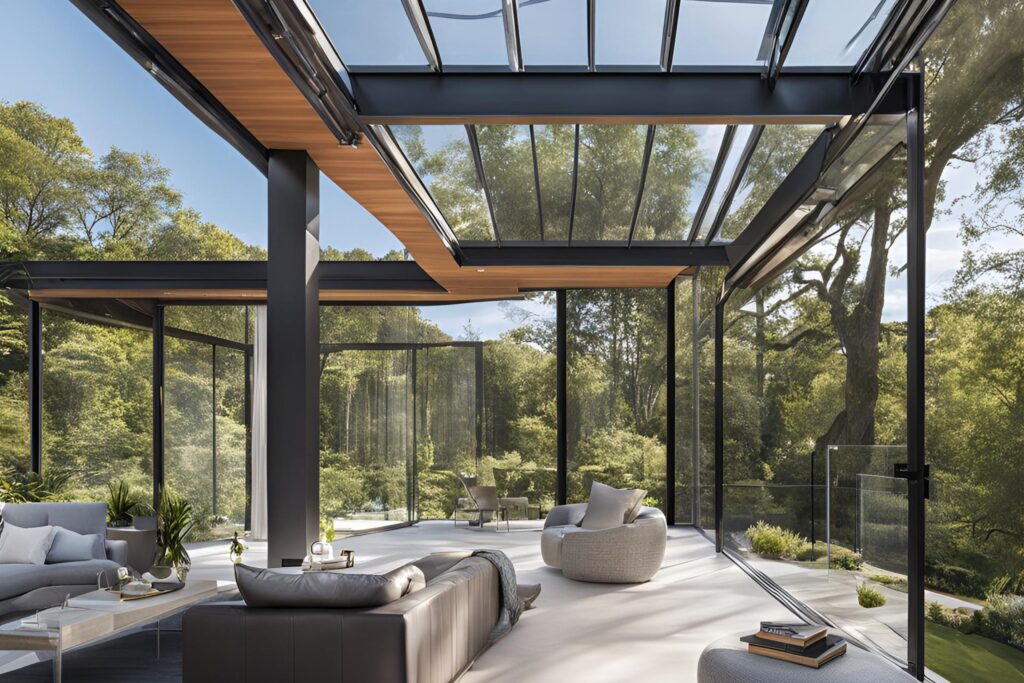
Types Of Clear Roofing Materials
When it comes to clear roofing materials, the market offers a variety of options, each with unique characteristics and benefits. Whether you are looking to install a new greenhouse, patio cover, or carport, understanding the different types of clear roofing materials available in New Zealand can help you make an informed decision.
Polycarbonate Roofing
Polycarbonate roofing is a popular choice for many homeowners and builders due to its exceptional properties.
Pros and Cons
Pros:
- Durability: Polycarbonate is incredibly durable and can withstand harsh weather conditions, including hail and strong winds.
- UV Protection: This material offers excellent UV protection, which helps in blocking harmful UV rays, making it ideal for spaces where people spend a lot of time.
- Lightweight: Despite its strength, polycarbonate is lightweight, making it easier to handle and install.
Cons:
- Prone to Scratches: Polycarbonate can get scratched relatively easily compared to other materials, which might affect its clarity over time.
- Potential Yellowing: Over time, polycarbonate can yellow due to prolonged exposure to sunlight, which might affect its aesthetic appeal.
Popular Brands in NZ
- Suntuf: Known for its high-quality polycarbonate sheets, Suntuf offers a range of options suitable for various applications.
- Laserlite: Another leading brand, Laserlite provides durable and UV-protected polycarbonate roofing solutions that are widely used across New Zealand.
Acrylic Roofing
Acrylic roofing is another excellent option, particularly favored for its clarity and aesthetic appeal.
Pros and Cons:
Pros:
- High Clarity: Acrylic roofing offers superior clarity, making it perfect for applications where maximum light transmission is desired.
- UV Resistant: Acrylic materials are naturally UV resistant, providing long-lasting protection against the sun’s harmful rays.
- Impact Resistant: Although not as tough as polycarbonate, acrylic still offers good impact resistance.
Cons:
- Less Durable: Compared to polycarbonate, acrylic is less durable and may not withstand extreme weather conditions as effectively.
- Can Be Expensive: Acrylic roofing can be more expensive than polycarbonate, which might be a consideration for budget-conscious projects.
Popular Brands in NZ
- Acrylite: Known for its high-quality acrylic sheets, Acrylite is a trusted name in the market.
- Plexiglas: Plexiglas offers a variety of acrylic products known for their clarity and durability.
Fiberglass Roofing
Fiberglass roofing is a cost-effective and versatile option, commonly used in various construction projects.
Pros and Cons
Pros:
- Cost-Effective: Fiberglass is generally more affordable compared to polycarbonate and acrylic, making it a budget-friendly option.
- Flexible: Fiberglass is flexible, which makes it easier to install on curved surfaces or unique architectural designs.
- Lightweight: Like polycarbonate, fiberglass is lightweight, which simplifies the installation process.
Cons:
- Less Clarity: Fiberglass does not offer the same level of clarity as polycarbonate or acrylic, which might be a drawback for certain applications.
- Potential for Discoloration: Over time, fiberglass can discolor, especially when exposed to prolonged sunlight.
Popular Brands in NZ
- Filon: Filon is a well-known brand offering a range of fiberglass roofing products suitable for different needs.
- SunSky: SunSky provides high-quality fiberglass sheets that are durable and versatile.
Glass Roofing
Glass roofing is often chosen for its luxurious appeal and exceptional clarity.
Pros and Cons
Pros:
- High Clarity: Glass offers unparalleled clarity, making it the best choice for applications where visual aesthetics are paramount.
- Long-Lasting: Glass is incredibly durable and, with proper maintenance, can last for many years without losing its clarity.
- Luxurious Appeal: Glass roofing adds a touch of luxury and sophistication to any structure.
Cons:
- Heavy: Glass is significantly heavier than other clear roofing materials, which requires a sturdy framework to support it.
- Expensive: The cost of glass roofing is higher than other options, both in terms of material and installation.
- Requires Sturdy Framework: Due to its weight, glass roofing needs a robust support structure, which can add to the overall cost of the project.
Popular Brands in NZ
- Velux: Velux is renowned for its high-quality glass roofing solutions, particularly for skylights and roof windows.
- Solar Control: Solar Control offers a range of glass roofing products designed to provide excellent clarity and UV protection.
Choosing the right clear roofing material depends on your specific needs and budget. Polycarbonate, acrylic, fiberglass, and glass each have their strengths and potential drawbacks. By considering factors such as durability, UV protection, clarity, and cost, you can select the material that best suits your project in New Zealand.
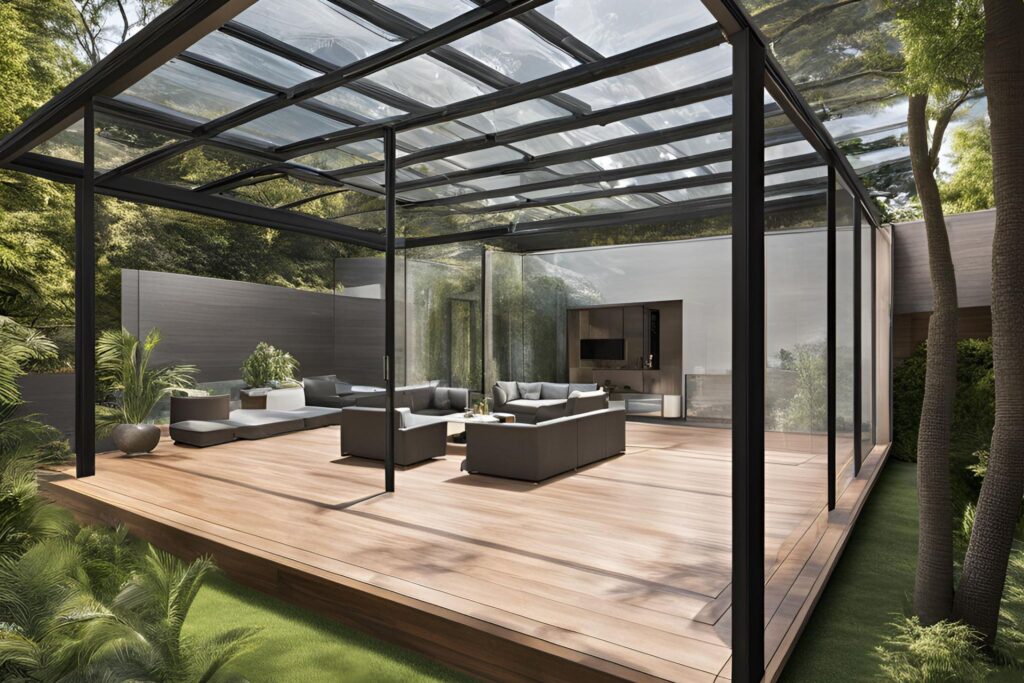
Installation And Maintenance Tips
When it comes to ensuring the longevity and efficiency of your roofing, proper installation and maintenance are crucial. Here, we’ll walk you through some essential tips and insights that can help you achieve a durable and well-maintained roof.
Installation
Basic Steps for DIY Installation
For those who are inclined towards DIY projects, installing your own roof can be a rewarding experience. However, it’s vital to follow these basic steps to ensure a successful installation:
1. Preparation: Begin by gathering all necessary tools and materials. Ensure you have a detailed plan and have measured your roof accurately.
2. Safety First: Always prioritize safety. Use proper safety gear, including harnesses, gloves, and non-slip footwear. Make sure your ladder is secure and on stable ground.
3. Removing Old Roofing: If you’re replacing an old roof, start by carefully removing the existing materials. This might involve pulling up shingles, tiles, or other materials down to the roof deck.
4. Inspect the Roof Deck: Once the old materials are removed, inspect the roof deck for any damage. Replace any rotten or damaged sections to ensure a solid foundation for your new roof.
5. Install Underlayment: Lay down the underlayment material, which acts as an additional layer of protection against moisture. Make sure it is installed smoothly without any wrinkles or gaps.
6. Install New Roofing Material: Follow the manufacturer’s instructions for installing your chosen roofing material, whether it’s shingles, metal panels, or tiles. Start from the bottom and work your way up, ensuring each row overlaps the one below it.
7. Seal and Flash: Proper sealing and flashing around chimneys, vents, and edges are critical to prevent leaks. Use high-quality sealants and flashing materials.
8. Final Inspection: Once the installation is complete, perform a thorough inspection to ensure everything is properly secured and sealed. Make any necessary adjustments before considering the job done.
Importance of Professional Installation for Larger Projects
While DIY installation can be suitable for small projects, larger roofing jobs typically require professional expertise. Here’s why:
1. Experience and Skills: Professional roofers have the experience and skills to handle complex installations efficiently. They can identify potential issues that may not be apparent to an untrained eye.
2. Quality of Work: A professional installation ensures the highest quality of work, reducing the likelihood of future problems such as leaks or premature wear.
3. Safety: Roofing can be dangerous, especially on larger projects. Professionals have the necessary safety equipment and training to perform the job safely.
4. Warranty: Many roofing materials come with warranties that may be voided if not installed by a certified professional. Hiring a pro ensures your warranty remains valid.
5. Time and Cost Efficiency: Professionals can complete the job faster and more efficiently, often saving you money in the long run by avoiding costly mistakes.
Maintenance
Regular Cleaning to Prevent Algae and Dirt Buildup
Regular maintenance is key to extending the life of your roof. One of the simplest yet most effective maintenance tasks is regular cleaning:
1. Algae Prevention: Algae can cause unsightly stains and damage to roofing materials. Clean your roof periodically with a mixture of water and mild detergent. For stubborn algae, consider using a specialized cleaner designed for roofs.
2. Dirt and Debris Removal: Remove leaves, branches, and other debris from your roof to prevent moisture buildup, which can lead to rot and other issues. Use a soft-bristled broom or a leaf blower to clean the surface gently.
3. Gutter Maintenance: Keep your gutters clean and free-flowing to prevent water from backing up onto the roof, which can cause damage over time. Regularly check and clean your gutters, especially after storms.
Checking for and Repairing Any Damage Promptly
Timely detection and repair of any damage can prevent minor issues from becoming major problems:
1. Regular Inspections: Conduct regular inspections of your roof, particularly after severe weather events. Look for signs of damage such as missing or cracked shingles, rust spots on metal roofs, or loose tiles.
2. Prompt Repairs: Address any damage immediately. Small issues like a missing shingle or a minor leak can quickly escalate into more significant problems if left unattended.
3. Professional Assistance: For more extensive repairs, it’s advisable to seek professional help. Professionals can provide a thorough assessment and ensure repairs are done correctly.
Tips on Extending the Lifespan of Your Roofing Material
To maximize the lifespan of your roof, consider these additional tips:
1. Proper Ventilation: Ensure your attic and roof have adequate ventilation. Poor ventilation can lead to heat and moisture buildup, which can damage your roof and reduce its lifespan.
2. Trim Overhanging Branches: Trees near your home can pose a threat to your roof. Trim branches that hang over your roof to prevent them from causing damage during storms or high winds.
3. Prevent Ice Dams: In colder climates, ice dams can form and cause water to back up under your shingles. Use proper insulation and ventilation in your attic to prevent this issue.
4. Quality Materials: Invest in high-quality roofing materials that are designed to withstand your region’s climate. Cheaper materials may save you money initially but can lead to higher repair and replacement costs in the long run.
By following these installation and maintenance tips, you can ensure your roof remains in excellent condition, providing protection and value for many years to come.
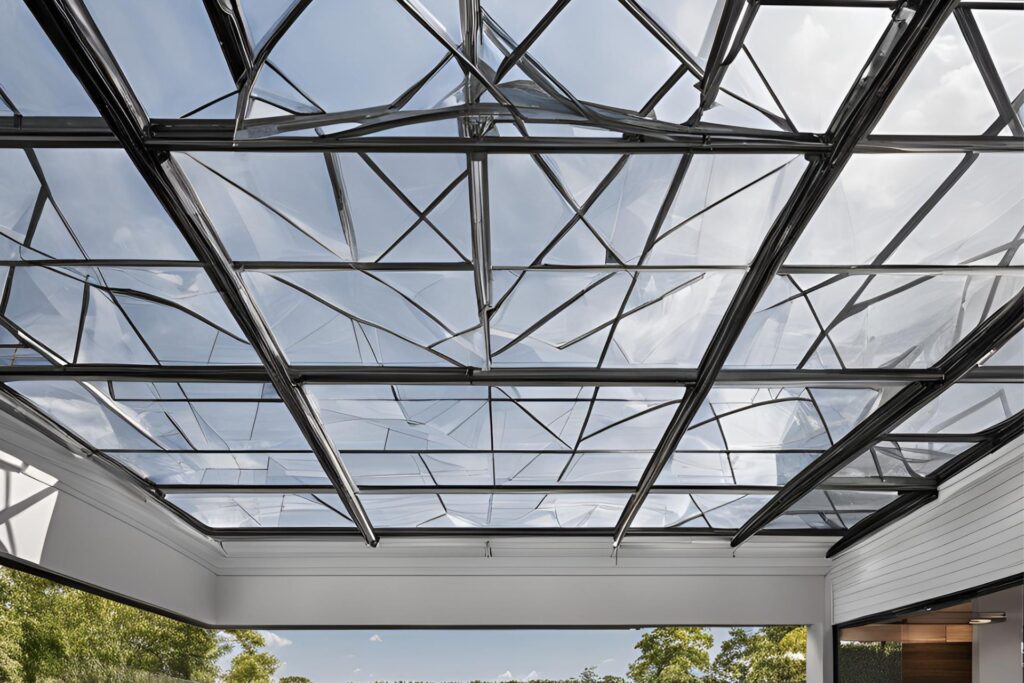
Environmental Considerations
When choosing clear roofing materials, it’s important to consider the environmental impact. This section delves into various eco-friendly options, the benefits of energy efficiency, and the importance of adhering to local regulations.
Eco-Friendly Options
In today’s world, sustainability is a top priority. Clear roofing materials can contribute to a greener planet if you select those that are recyclable or made from recycled content. Polycarbonate sheets, for instance, are a popular choice due to their durability and recyclability. Manufacturers often produce these sheets from post-consumer plastics, giving a second life to materials that would otherwise end up in landfills. Additionally, choosing roofing options like these not only reduces waste but also minimizes the demand for virgin materials, helping to conserve natural resources.
Another excellent eco-friendly option is acrylic roofing. This material is not only lightweight and robust but also highly recyclable. After its lifespan, acrylic can be broken down and reprocessed into new products, ensuring that it doesn’t contribute to environmental pollution. Opting for materials that support a circular economy can significantly reduce your construction project’s carbon footprint.
Energy Efficiency
Clear roofing materials can play a pivotal role in enhancing energy efficiency. By allowing natural light to permeate through, these roofs reduce the need for artificial lighting during daylight hours. This natural illumination not only cuts down on energy consumption but also creates a more pleasant and healthier indoor environment.
For instance, in commercial buildings like warehouses or greenhouses, clear roofing can lead to substantial energy savings. Natural light can reduce the dependency on electric lighting, which, in turn, lowers electricity bills and decreases the building’s overall carbon emissions. Additionally, certain clear roofing materials come with UV protection, which helps in maintaining a cooler indoor temperature. This can lessen the reliance on air conditioning, further contributing to energy efficiency.
Local Regulations
Before installing clear roofing, it’s crucial to be aware of any local building codes or regulations that might apply. These regulations are in place to ensure safety, structural integrity, and environmental responsibility. For example, some areas may have specific requirements regarding the fire resistance of roofing materials. Clear roofing materials should meet these safety standards to prevent any hazards.
Moreover, local regulations might dictate the types of materials that can be used in construction to promote sustainability. Understanding these guidelines can help you choose materials that not only comply with the law but also support environmental conservation efforts. In some regions, there might be incentives or rebates for using eco-friendly building materials, making it financially beneficial to go green.
Staying informed about local building codes can also ensure that your project progresses smoothly without any legal hiccups. It’s always a good idea to consult with local authorities or a building inspector to ensure that your choice of clear roofing materials aligns with all applicable regulations.
Incorporating clear roofing into your building project comes with several environmental considerations. Choosing recyclable materials, enhancing energy efficiency through natural lighting, and adhering to local regulations are essential steps in creating a sustainable and compliant structure. By making informed decisions, you not only contribute to the well-being of the planet but also benefit from potential cost savings and a healthier living environment.

Customer Testimonials And Case Studies
Testimonials
When it comes to making a decision about home improvement projects, hearing from others who have already taken the plunge can be incredibly reassuring. That’s why customer testimonials are a powerful tool. Real-life experiences from New Zealand homeowners who have installed clear roofing can provide valuable insights and peace of mind.
Imagine hearing from Jane in Auckland, who raves about how her new clear roof has transformed her outdoor patio into a year-round sanctuary. She mentions how the natural light floods the space, making it perfect for entertaining, no matter the weather. Or take Paul in Wellington, who highlights the durability and aesthetic appeal of his clear roofing, which seamlessly integrates with the modern design of his home. These stories offer genuine perspectives that potential customers can relate to and trust.
Incorporating these authentic testimonials not only builds credibility but also showcases the real-world benefits of clear roofing. It allows prospective customers to envision how clear roofing could enhance their own homes, addressing common concerns and highlighting unique advantages.
Case Studies
While testimonials provide snapshots of customer satisfaction, case studies delve deeper into the specifics of each project, offering a comprehensive view of the application and results of clear roofing. These detailed narratives explore various aspects of the installation process, the challenges faced, and the outstanding outcomes achieved.
Consider a case study featuring a family in Christchurch who wanted to create an all-season outdoor living space. The case study details their initial concerns about weather resistance and heat retention. It then explains how these concerns were addressed through the innovative design and materials used in their clear roofing installation. The result? A versatile space that remains cool in summer and cozy in winter, allowing the family to enjoy their garden regardless of the season.
Another case study might focus on a commercial application, such as a café in Queenstown that needed an attractive, weatherproof solution for their outdoor seating area. The case study would describe the project’s objectives, the selection of clear roofing for its aesthetic and functional benefits, and the positive impact on the café’s business, including increased patronage and customer satisfaction.
By presenting these detailed case studies, potential customers gain a deeper understanding of the versatility and effectiveness of clear roofing in different settings. They can see how specific challenges were met with tailored solutions, reinforcing the value of clear roofing for their own needs.
In summary, customer testimonials and case studies are essential in illustrating the practical benefits and real-life applications of clear roofing. They provide potential customers with relatable stories and detailed insights, helping them make informed decisions with confidence.
Expert Recommendations
Choosing the Right Material
Selecting the appropriate material for your construction or renovation project is crucial to its success and longevity. Experts in the industry have shared their insights on the best materials for various applications to help guide your decision-making process.
Timber is often recommended for its aesthetic appeal and versatility. Experts suggest using treated timber for outdoor projects like decking and fencing, as it resists decay and pests. For indoor use, native New Zealand woods like Rimu and Kauri are prized for their beauty and durability.
Concrete is another top choice, especially for foundations, driveways, and structural elements. According to professionals, reinforced concrete is preferred for its strength and ability to withstand heavy loads. For a polished finish, experts recommend using high-quality cement mixes and proper curing techniques.
Composite materials are gaining popularity for their low maintenance and longevity. Industry specialists advise using composite decking for its resistance to moisture and UV damage, making it an excellent option for coastal environments.
Steel is favored for structural frameworks due to its high strength-to-weight ratio. Experts highlight its use in commercial and industrial buildings, as well as modern residential designs. Galvanized steel is particularly recommended for its corrosion resistance.
Where to Buy
Finding reputable suppliers and retailers in New Zealand is essential to ensure you receive quality materials and reliable service. Here are some of the top-rated suppliers recommended by industry professionals:
1. PlaceMakers: Known for its wide range of building materials, PlaceMakers is a trusted name among New Zealand contractors and DIY enthusiasts. They offer everything from timber and concrete to hardware and tools.
2. Bunnings Warehouse: A popular choice for both professionals and homeowners, Bunnings Warehouse provides an extensive selection of building materials, gardening supplies, and home improvement products. Their competitive prices and nationwide locations make them a convenient option.
3. Carters: Specializing in timber and building supplies, Carters is well-regarded for its quality products and knowledgeable staff. They offer personalized services to help you choose the right materials for your project.
4. Mitre 10: With a strong presence across New Zealand, Mitre 10 is a go-to for many builders and renovators. They stock a comprehensive range of materials and offer expert advice to ensure your project runs smoothly.
5. ITM (Independent Timber Merchants): ITM is highly recommended for its specialized timber products and custom cutting services. They cater to both large-scale construction projects and smaller DIY endeavors.
By choosing the right materials and sourcing them from reputable suppliers, you can ensure the success and durability of your construction or renovation project.
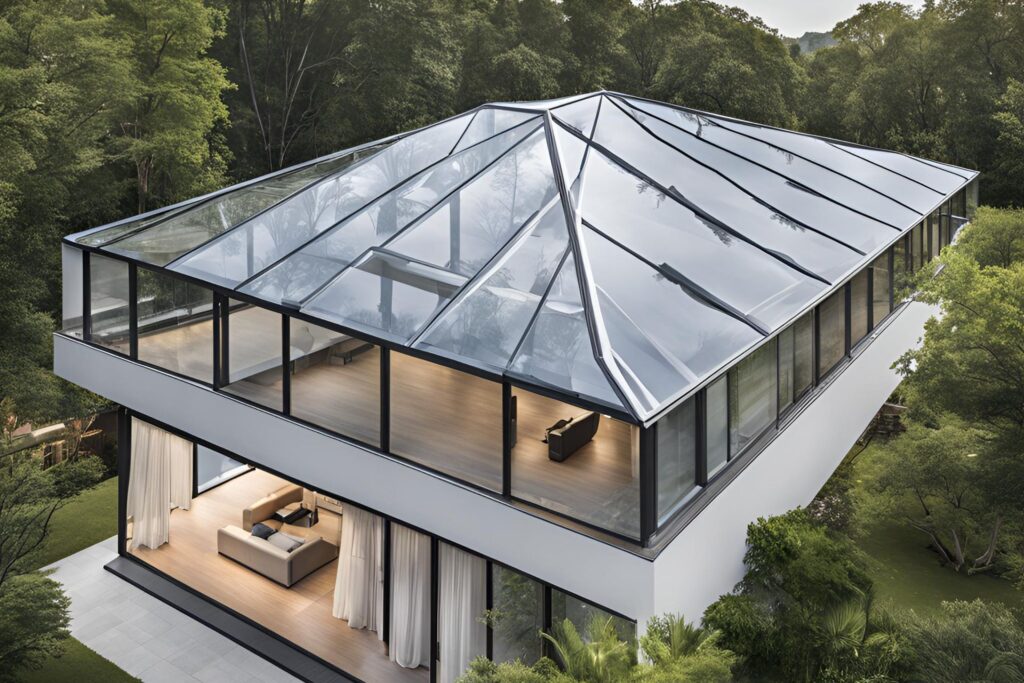
FAQs: About Best Clear Roofing Material NZ
What are the most popular clear roofing materials in New Zealand?
The most popular clear roofing materials in New Zealand are polycarbonate, acrylic, fiberglass, and glass. Each material offers different benefits, such as durability, UV protection, and aesthetic appeal.
What are the main benefits of using clear roofing materials?
Clear roofing materials allow natural light to enter, reducing the need for artificial lighting and enhancing the aesthetic appeal of outdoor and indoor spaces. They also provide good insulation properties and can be UV resistant, protecting against sun damage.
How do I choose the right clear roofing material for my needs?
Consider factors like durability, UV protection, insulation properties, cost, and aesthetic appeal. For example, polycarbonate is durable and UV resistant, while glass offers a luxurious look but is more expensive and requires a sturdy framework.
Is polycarbonate roofing a good option for NZ’s climate?
Yes, polycarbonate roofing is a great option for New Zealand’s climate. It is highly durable, UV resistant, and can withstand various weather conditions, making it suitable for many applications, including patios and greenhouses.
What are the pros and cons of acrylic roofing?
Acrylic roofing offers high clarity, UV resistance, and impact resistance, making it an excellent choice for areas requiring clear views. However, it is less durable than polycarbonate and can be more expensive.
How does fiberglass roofing compare to other clear roofing materials?
Fiberglass roofing is cost-effective, flexible, and lightweight. It provides good durability but has less clarity compared to polycarbonate and acrylic. It can also discolor over time if not properly maintained.
What maintenance is required for clear roofing materials?
Regular cleaning is essential to prevent algae and dirt buildup. Periodically check for any damage, such as cracks or leaks, and repair them promptly. Proper maintenance can extend the lifespan of your clear roofing material.
Are there eco-friendly clear roofing options available?
Yes, some clear roofing materials are recyclable or made from recycled content. Polycarbonate and acrylic can often be recycled, making them more environmentally friendly choices.
How does clear roofing contribute to energy efficiency?
Clear roofing materials allow natural light to enter, reducing the need for artificial lighting during the day. This can lower energy consumption and contribute to a more energy-efficient home.
Where can I purchase high-quality clear roofing materials in New Zealand?
Reputable suppliers and retailers in New Zealand, such as Mitre 10, Bunnings Warehouse, and specialized roofing material stores, offer a wide range of high-quality clear roofing materials. It’s advisable to check customer reviews and consult with professionals to ensure you choose the best product for your needs.
Conclusion
In conclusion, this article has highlighted the various clear roofing materials available, detailing their specific benefits and ideal applications. By understanding the key points discussed, such as durability, light transmission, and cost-effectiveness, homeowners and builders can make informed decisions tailored to their specific needs. Choosing the right clear roofing material can significantly enhance the functionality and aesthetics of any space, providing long-term benefits such as energy efficiency and enhanced natural lighting. Whether you’re considering a DIY project, planning to visit a supplier, or seeking professional advice, now is the perfect time to take the next step towards improving your property with the optimal clear roofing solution.
About the Author:
Mike Veail is a recognized digital marketing expert with over 6 years of experience in helping tradespeople and small businesses thrive online. A former quantity surveyor, Mike combines deep industry knowledge with hands-on expertise in SEO and Google Ads. His marketing strategies are tailored to the specific needs of the trades sector, helping businesses increase visibility and generate more leads through proven, ethical methods.
Mike has successfully partnered with numerous companies, establishing a track record of delivering measurable results. His work has been featured across various platforms that showcase his expertise in lead generation and online marketing for the trades sector.
Learn more about Mike's experience and services at https://theleadguy.online or follow him on social media:
